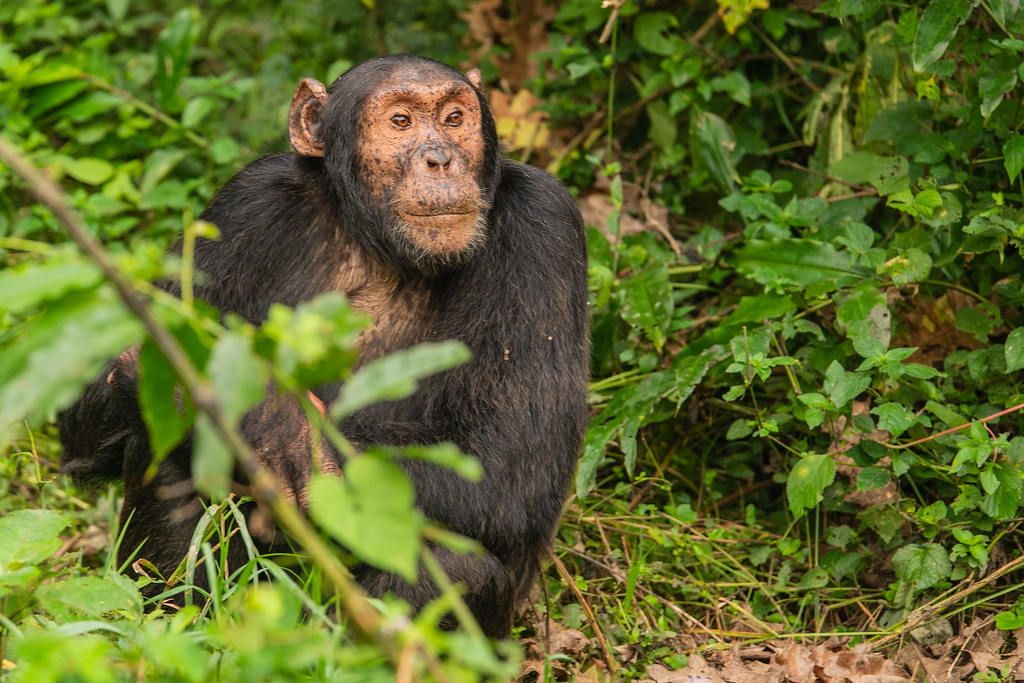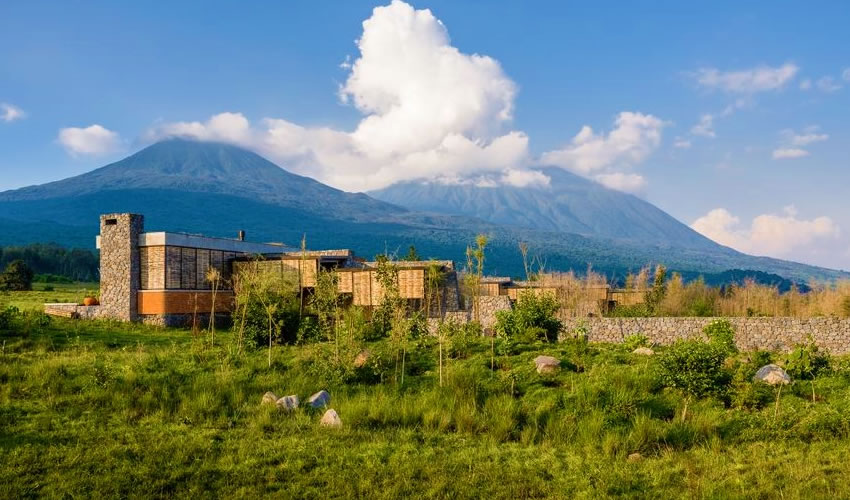- GET IN TOUCH WITH US:
- +256 753518160
- +256 777842166
- info@experiyatourcompany.com

What’s the best route for a self-drive safari in Uganda?
November 10, 2025
Can I take a hot air balloon over Murchison Falls?
November 10, 2025What’s the best national park for photographers?

What’s the Best National Park for Photographers?
Uganda is a country of astonishing beauty, where every sunrise paints the sky in golden hues and every horizon hides a scene worth capturing. For photographers, this East African gem offers endless inspiration — misty mountains, wildlife-filled savannas, glimmering lakes, and lush forests all waiting to be immortalized through the lens. Whether you’re a professional wildlife photographer, a landscape enthusiast, or simply a traveler with a passion for visual storytelling, Uganda is one of the most rewarding photographic destinations on the continent. But with ten national parks spread across the country, each boasting unique scenery and wildlife, the question naturally arises: what’s the best national park for photographers?
The truth is, Uganda’s parks all have their photographic magic. Yet among them, a few stand out for their diversity of subjects, dramatic lighting, and overall visual drama. Here’s a detailed exploration of Uganda’s most photogenic national parks and why one, in particular, stands above the rest as the ultimate photographer’s paradise.
Murchison Falls National Park – Power and Majesty in Motion
For photographers seeking raw energy, movement, and breathtaking landscapes, Murchison Falls National Park is unmatched. Situated in northwestern Uganda, this is the country’s largest and oldest national park, named after the mighty falls where the River Nile explodes through a narrow seven-meter gorge and plunges 45 meters into the river below. The force of the water and the mist rising from the falls create one of the most spectacular scenes in Africa — a dream for landscape and long-exposure photography.
Beyond the falls, Murchison’s savanna plains, palm-studded grasslands, and riverine forests provide a wide range of subjects. Early morning and late afternoon light cast golden tones across the plains, where elephants, giraffes, buffaloes, and lions roam freely. Photographers can capture intimate wildlife portraits or wide-angle shots showcasing animals against the dramatic Nile backdrop.
The boat cruise on the Nile to the base of the falls offers exceptional opportunities for photographing hippos, crocodiles, and birds at eye level. Reflections on the calm water, contrasting textures between rock and spray, and vibrant skies at sunset make every frame a masterpiece waiting to happen.
Queen Elizabeth National Park – A Photographer’s Dream of Diversity
If there is one park that defines photographic variety, it is Queen Elizabeth National Park in western Uganda. Its landscapes stretch from the snow-capped peaks of the Rwenzori Mountains to shimmering crater lakes, open savannas, wetlands, and tropical forests. The sheer diversity of environments allows photographers to experiment with multiple genres — wildlife, landscape, people, and even cultural photography.
The Kasenyi Plains are ideal for capturing predators in soft dawn light. Lions, often seen stalking Uganda kobs, provide classic safari imagery. The Kazinga Channel, a natural waterway connecting Lakes Edward and George, offers the perfect setting for boat-based photography, where elephants drink, buffaloes wallow, and kingfishers dart across the water’s surface. The golden hour here paints everything in rich, glowing tones that photographers dream of.
In the park’s southern Ishasha sector, tree-climbing lions rest elegantly on fig tree branches, providing rare and iconic photo opportunities. Add to that the crater lakes of the Katwe region and the views of the Rwenzori Mountains, and Queen Elizabeth becomes a landscape photographer’s wonderland. Even night photography is possible in some lodges, with the starlit sky reflecting off the lake’s surface, creating serene astrophotography compositions.
Bwindi Impenetrable Forest National Park – Emotion and Connection
For photographers who crave emotion, intimacy, and storytelling, Bwindi Impenetrable National Park is the crown jewel. Hidden in Uganda’s southwest, Bwindi is home to more than half of the world’s remaining mountain gorillas — an encounter that no lens can ever fully capture, yet every photographer dreams of attempting.
Gorilla trekking in Bwindi offers raw, unfiltered moments of connection between humans and one of our closest relatives. The forest itself, dense and ethereal, creates a natural studio of diffused light and green tones. Capturing a gorilla family through the foliage — a mother cradling her infant or a silverback’s powerful gaze — demands patience and skill, but the results are some of the most powerful wildlife images in existence.
Beyond the gorillas, Bwindi’s mist-covered hills, tangled vines, and mountain trails are an endless canvas for photographers interested in mood and atmosphere. Early mornings, when the mist swirls between the trees, offer some of the most dramatic forest shots anywhere in Africa.
Kidepo Valley National Park – Isolation and Untamed Beauty
For those drawn to remote and wild landscapes, Kidepo Valley National Park in northeastern Uganda is pure photographic magic. Often described as Uganda’s most untouched wilderness, Kidepo’s vast golden plains stretch toward rugged mountain ridges, creating compositions that blend grandeur with solitude.
Here, the light is crisp and clean, especially in the dry season when the sky turns an intense blue. Herds of buffalo and zebra create strong patterns across the plains, while giraffes and elephants stand silhouetted against the evening sun. Kidepo is also one of the best places to photograph predators — lions, leopards, and cheetahs — in wide open settings with unobstructed views.
The park’s remote location ensures few tourists, allowing photographers the rare chance to frame wildlife and landscapes without distraction. The surrounding Karamojong communities add a cultural layer to photography, with their traditional attire, dances, and cattle camps offering timeless portraits of pastoral life.
Lake Mburo National Park – Gentle Light and Close Encounters
For photographers seeking intimate wildlife moments, Lake Mburo National Park provides a calm and accessible setting. Located between Kampala and Bwindi, it’s the perfect stopover for photographers traveling the western circuit. The park’s rolling hills, scattered acacia trees, and tranquil lakes create soft, painterly light ideal for capturing details and reflections.
Because there are no lions in Lake Mburo, wildlife such as zebras, impalas, and elands are more relaxed, allowing for closer encounters and detailed portrait photography. Walking safaris and horseback rides provide unique low-angle perspectives of the savanna, while boat cruises on Lake Mburo reveal waterbirds, hippos, and crocodiles framed beautifully against the soft pastel hues of dusk.
Rwenzori Mountains National Park – Landscapes of Mystery
For landscape photographers and adventure lovers, the Rwenzori Mountains, also known as the Mountains of the Moon, offer an otherworldly experience. The park’s high-altitude peaks, glaciers, and alpine valleys form one of Africa’s most photogenic mountain ranges. The ever-changing weather, swirling mist, and dramatic light conditions create opportunities for moody, cinematic photography.
The climb itself is a visual journey — from lush montane forests to giant lobelias and moss-draped trees that seem almost surreal. The challenge of reaching the higher peaks rewards photographers with views of snow-capped summits under equatorial skies, a rare sight anywhere on the continent.
The Best National Park for Photographers: Queen Elizabeth National Park
While every Ugandan park offers something special, Queen Elizabeth National Park stands out as the ultimate destination for photographers. Its unparalleled diversity of landscapes, abundance of wildlife, and accessibility make it a perfect canvas for every kind of photography — from sweeping landscapes to close-up animal portraits.
In a single day, you can capture elephants crossing the Kazinga Channel, flamingos reflecting in the salt lakes, lions resting on acacia branches, and the Rwenzori Mountains glowing at sunset. The variety of habitats — open savanna, volcanic craters, forests, and wetlands — ensures that no two photos look alike. For photographers, it’s like having multiple ecosystems in one location.
Moreover, the light in Queen Elizabeth is exceptional. The early morning haze softens the plains, creating delicate tones, while the late afternoon sun casts warm golden hues that accentuate the colors of wildlife and landscape alike. Photographers can experiment with backlighting, silhouettes, reflections, and patterns — all within one of Africa’s most dynamic photographic environments.
The park also offers opportunities for cultural photography, especially in nearby communities such as Katwe and Kasoga, where traditional salt mining and fishing activities showcase Uganda’s human connection to the land. Combining these human elements with wildlife and landscapes results in a well-rounded photographic story that goes beyond just beautiful images — it tells the soul of Uganda.
Tips for Photographers Visiting Uganda’s National Parks
-
Golden Hour Advantage: Early mornings (6:30–9:00 a.m.) and late afternoons (4:30–6:30 p.m.) provide the best natural lighting for both wildlife and landscapes.
-
Bring the Right Gear: A telephoto lens (200–600mm) is essential for wildlife, while a wide-angle lens (16–35mm) is ideal for landscapes. A tripod and beanbag are helpful for stability.
-
Respect Wildlife: Always maintain a safe distance. Never use flash on animals, particularly primates or nocturnal species.
-
Be Patient: The best shots often come after long hours of waiting. Watch animal behavior and anticipate movement.
-
Experiment with Composition: Include elements like dust, reflections, and silhouettes to create atmosphere.
-
Protect Your Equipment: Dust, humidity, and rain can challenge your gear. Carry waterproof covers and cleaning tools.
-
Learn the Culture: Uganda’s people and traditions are as photogenic as its wildlife. Always ask permission before photographing locals.
Why Uganda is a Photographer’s Paradise
Uganda’s beauty lies in its diversity. Few countries can offer such a range of photographic opportunities within short distances — from dense jungles with gorillas to golden plains filled with lions, and from volcanic lakes to mist-covered mountains. The country’s relatively low tourist numbers mean photographers enjoy uncrowded parks, uninterrupted shots, and the serenity of pure nature.
Moreover, Uganda’s light — gentle, diffused, and golden — gives photos a warmth that reflects the character of the land itself. Every image taken here feels alive with the rhythm of Africa.
Book Your Photography Safari with Experiya Tour Company
If you’re a photographer dreaming of capturing Uganda’s landscapes and wildlife, let Experiya Tour Company design your perfect itinerary. With deep local knowledge, expert guides, and an understanding of photographers’ needs, Experiya ensures you’re always in the right place at the right time for that perfect shot.
From the roaring cascades of Murchison Falls to the tranquil Kazinga Channel sunsets and the intense encounters of gorilla trekking in Bwindi, Experiya crafts journeys that cater to both amateur and professional photographers. They arrange private vehicles, experienced driver-guides familiar with light conditions, and access to lodges with stunning photographic vantage points.
Travel with Experiya Tour Company and capture Uganda not just through your lens, but through the heart — one unforgettable image at a time.



